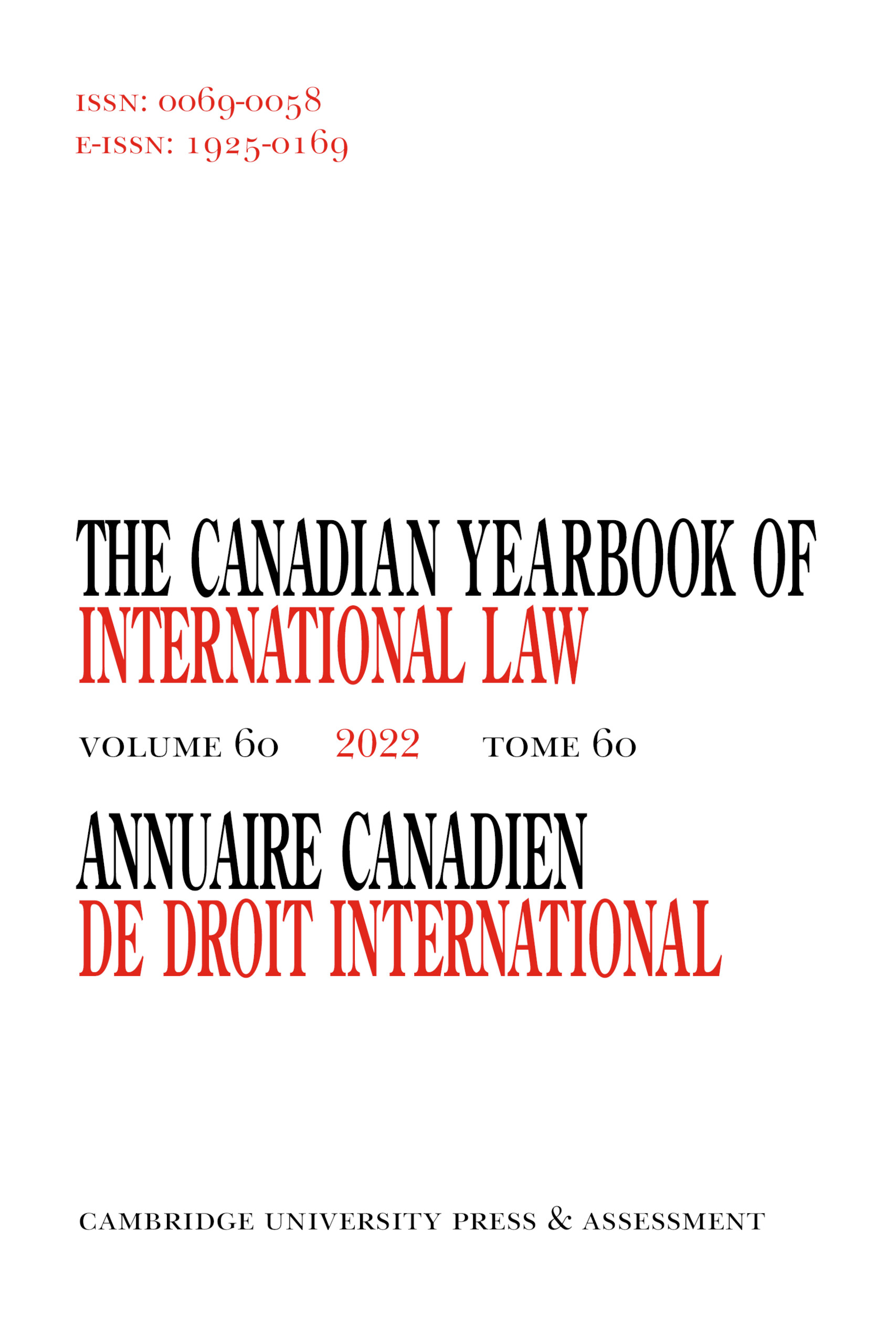No CrossRef data available.
Article contents
Contemporary U.S. Theory of International Law*
Published online by Cambridge University Press: 09 March 2016
Extract
My retrospective study, published in the twenty-fifth anniversary volume of this Yearbook, attempted a critical survey of post-war Soviet general theory of international law, and noted the signs of an intellectual changing of the guard and the emergence of a new generation of Soviet international legal theorists. Is it possible today to speak of a post-war U.S. general theory of international law, and, if so, can we speak of a generational change, in the late 1980's, similar to that in the Soviet Union?
- Type
- Notes and Comments/Notes et commentaires
- Information
- Canadian Yearbook of International Law/Annuaire canadien de droit international , Volume 26 , 1989 , pp. 281 - 295
- Copyright
- Copyright © The Canadian Council on International Law / Conseil Canadien de Droit International, representing the Board of Editors, Canadian Yearbook of International Law / Comité de Rédaction, Annuaire Canadien de Droit International 1989
References
1 “Contemporary Soviet General Theory of International Law: Reflections on the Tunkin Era,” 25 Canadian Yearbook of International Law 187–217 (1987).
2 Kennedy, , 26 Harv. Int’lL.J. 361, 366 (1985).Google Scholar
3 D’Amato, , The Concept of Custom in International Law (1971).Google Scholar
4 International Law: Process and Prospect, 124.
5 International Legal Structures, 29.
6 See McWhinney, , “‘Classical’ Sources and the International Law-Making Process of Contemporary International Law,” in Ziccardi, (ed.), Le droit international à l’heure de sa codification: Études en l’honneur de Roberto Ago, vol. 1, at 341 (1987)Google Scholar; and, more generally, United Nations Law Making (1984),0115. 3 and 4).


